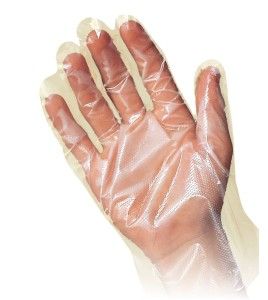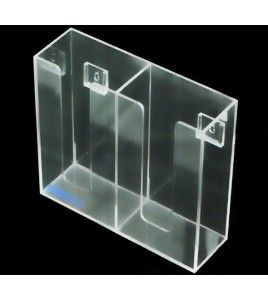Disposable Latex, Nitrile, Vinyl Gloves
Sylprotec offers the infamous disposable gloves used in several sectors of activities. Since the discovery of transmissible virus, the use of disposable gloves has gained considerable popularity in the healthcare sector. Nowadays, the use of disposable gloves goes beyond the health sector: they are found in the processing industries, restaurants, hair salons and many other places. The many applications requiring the wearing of protective glove generated as many models of gloves which complicates your right choice.
We recommend that you read the following steps to figure out which type of glove you need
Step 1: The choice of material
- Vinyl offers little resistance to tearing and has barely any elasticity on top of not being really resistant to any chemical substances. There is no known allergy to vinyl which makes it a hypoallergenic material and its cost is one of the lowest on the market.
- Latex offers a good resistance to tearing; it’s one of the stretchiest materials known and offers a medium resistance to chemical substances. However, latex is known to cause allergies, it cost a little more than vinyl, but less than nitrile.
- Nitrile offers an excellent resistance to tearing; it’s more or less stretchy which is compensated by the fact that it’s extremely resistant. Indeed, it resists physical breaks and chemical substance really well. There is no known allergy to nitrile, but its cost is one of the highest on the market.
Step 2: The choice of color
- Blue gloves are mainly used in the food industry due to the low prevalence of blue food. In the event of a loss of a glove or a part of it, a blue glove will be easier to spot among the food. Blue gloves are usually a little more expensive than the skin-coloured gloves.
- Colourless or skin-coloured gloves are used in the majority of applications.
- Black gloves are usually made of nitrile, but their colour has no intentional use, it’s only as a preference. Black gloves are also a bit more expensive than the colourless one.
Step 3: The choice of a powdered or powder free glove
- Disposable powdered gloves are easier to pull on and off.
- Disposable powder free gloves are commonly used to limit contamination by powder.
Step 4: The choice of thickness
- The thickness of a glove is expressed in mils (thousandth of an inch). One may find a 3 mils thick glove which is a bit thin, but may fairly do the job if used only once.
- A thickness of 4 mils or 5 mils is corresponds usually to a latex or nitrile glove. That thickness fits most applications that is, pharmaceutical, medical, etc.
- A thickness of 8 mils makes the glove one of the most resistant to tear on the market. However, one may lose some dexterity with 8 mils, so it is not suitable for a meticulous work. It is also more expensive than most other models of gloves found on the market, but they are popular among mechanics for their resistance to solvents.
Step 5: The choice of size
- Our products are available in all sizes; however we keep in stock only the median sizes, that is, small to extra-large. All other sizes are available on special order.
Our selections of gloves include:














